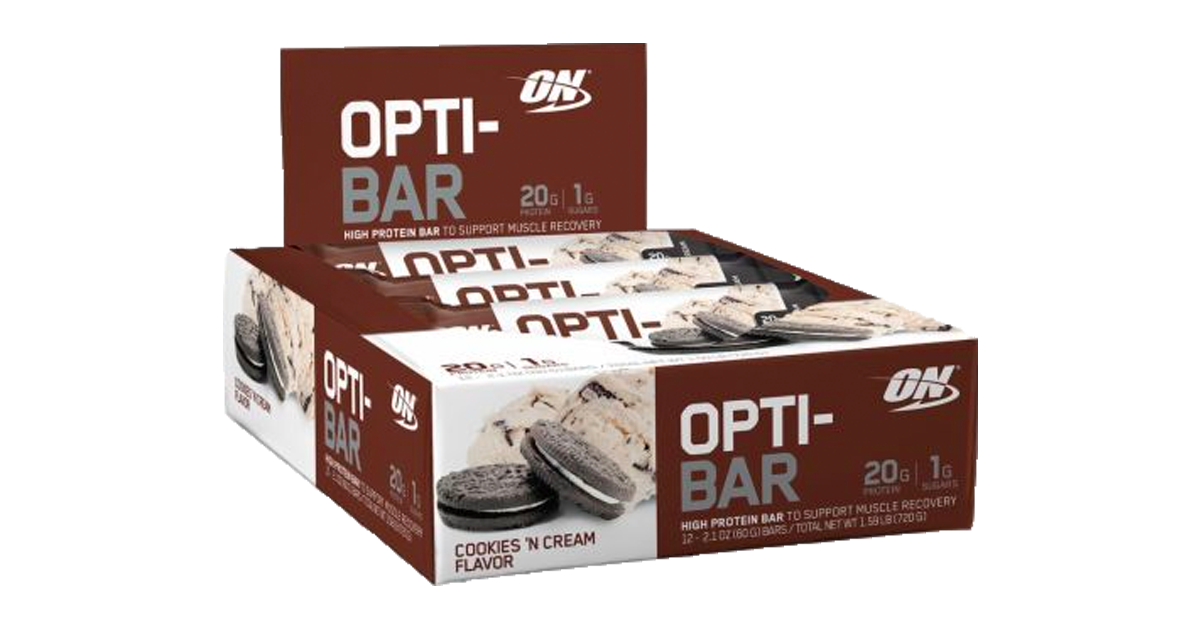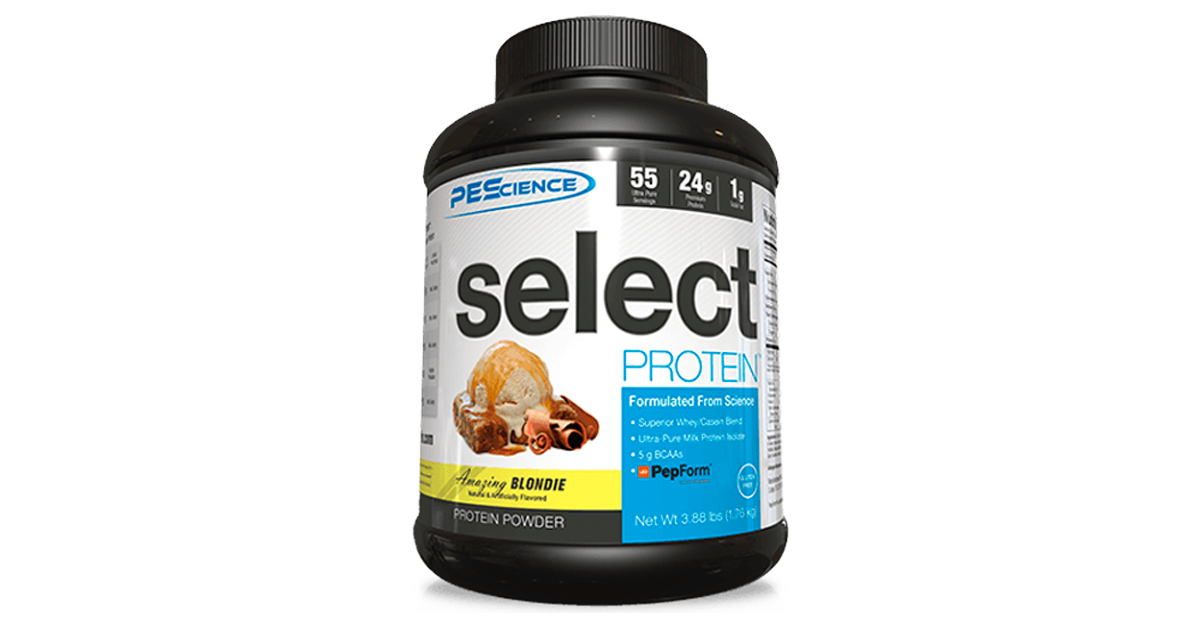 [vc_row type=”in_container” full_screen_row_position=”middle” scene_position=”center” text_color=”dark” text_align=”left” top_padding=”10″ overlay_strength=”0.3″][vc_column centered_text=”true” column_padding=”no-extra-padding” column_padding_position=”all” background_color_opacity=”1″ background_hover_color_opacity=”1″ column_shadow=”none” width=”1/1″ tablet_text_alignment=”default” phone_text_alignment=”default” column_border_width=”none” column_border_style=”solid”][vc_raw_html]JTNDYSUyMGhyZWYlM0QlMjJodHRwcyUzQSUyRiUyRmZpdG5lc3NpbmZvcm1hbnQuY29tJTJGcmVjb21tZW5kcyUyRmNoZWYtcm9iZXJ0LWlydmluZXMtZml0LWNydW5jaC10aWdlciUyRiUyMiUyMHJlbCUzRCUyMm5vZm9sbG93JTIyJTIwY2xhc3MlM0QlMjJteUJ1dHRvbiUyMiUzRUNMSUNLJTIwSEVSRSUwQSUyMEZPUiUyMExPV0VTVCUyMFBSSUNFJTIwJTNFJTNFJTNDJTJGYSUzRQ==[/vc_raw_html][vc_custom_heading text=”See Our Retailer Price Comparison Table” font_container=”tag:p|font_size:22px|text_align:center|color:%23f96566″ google_fonts=”font_family:Lato%3A100%2C100italic%2C300%2C300italic%2Cregular%2Citalic%2C700%2C700italic%2C900%2C900italic|font_style:900%20bold%20regular%3A900%3Anormal” link=”url:%23table|||”][/vc_column][/vc_row][vc_row type=”in_container” full_screen_row_position=”middle” scene_position=”center” text_color=”dark” text_align=”left” overlay_strength=”0.3″][vc_column column_padding=”no-extra-padding” column_padding_position=”all” background_color_opacity=”1″ background_hover_color_opacity=”1″ column_shadow=”none” width=”1/1″ tablet_text_alignment=”default” phone_text_alignment=”default” column_border_width=”none” column_border_style=”solid”][vc_custom_heading text=”Overview of Chef Robert Irvine’s Fit Crunch Bars” google_fonts=”font_family:Lato%3A100%2C100italic%2C300%2C300italic%2Cregular%2Citalic%2C700%2C700italic%2C900%2C900italic|font_style:900%20bold%20regular%3A900%3Anormal”][vc_column_text]Chef Robert Irvine is famous for his shows on the Food Network. He’s been in episodes of Chopped, Beat Booby Flay and others. Robert Irvine is also a fitness enthusiast who used his culinary knowledge to enter into the protein bar market.
[vc_row type=”in_container” full_screen_row_position=”middle” scene_position=”center” text_color=”dark” text_align=”left” top_padding=”10″ overlay_strength=”0.3″][vc_column centered_text=”true” column_padding=”no-extra-padding” column_padding_position=”all” background_color_opacity=”1″ background_hover_color_opacity=”1″ column_shadow=”none” width=”1/1″ tablet_text_alignment=”default” phone_text_alignment=”default” column_border_width=”none” column_border_style=”solid”][vc_raw_html]JTNDYSUyMGhyZWYlM0QlMjJodHRwcyUzQSUyRiUyRmZpdG5lc3NpbmZvcm1hbnQuY29tJTJGcmVjb21tZW5kcyUyRmNoZWYtcm9iZXJ0LWlydmluZXMtZml0LWNydW5jaC10aWdlciUyRiUyMiUyMHJlbCUzRCUyMm5vZm9sbG93JTIyJTIwY2xhc3MlM0QlMjJteUJ1dHRvbiUyMiUzRUNMSUNLJTIwSEVSRSUwQSUyMEZPUiUyMExPV0VTVCUyMFBSSUNFJTIwJTNFJTNFJTNDJTJGYSUzRQ==[/vc_raw_html][vc_custom_heading text=”See Our Retailer Price Comparison Table” font_container=”tag:p|font_size:22px|text_align:center|color:%23f96566″ google_fonts=”font_family:Lato%3A100%2C100italic%2C300%2C300italic%2Cregular%2Citalic%2C700%2C700italic%2C900%2C900italic|font_style:900%20bold%20regular%3A900%3Anormal” link=”url:%23table|||”][/vc_column][/vc_row][vc_row type=”in_container” full_screen_row_position=”middle” scene_position=”center” text_color=”dark” text_align=”left” overlay_strength=”0.3″][vc_column column_padding=”no-extra-padding” column_padding_position=”all” background_color_opacity=”1″ background_hover_color_opacity=”1″ column_shadow=”none” width=”1/1″ tablet_text_alignment=”default” phone_text_alignment=”default” column_border_width=”none” column_border_style=”solid”][vc_custom_heading text=”Overview of Chef Robert Irvine’s Fit Crunch Bars” google_fonts=”font_family:Lato%3A100%2C100italic%2C300%2C300italic%2Cregular%2Citalic%2C700%2C700italic%2C900%2C900italic|font_style:900%20bold%20regular%3A900%3Anormal”][vc_column_text]Chef Robert Irvine is famous for his shows on the Food Network. He’s been in episodes of Chopped, Beat Booby Flay and others. Robert Irvine is also a fitness enthusiast who used his culinary knowledge to enter into the protein bar market.
Fit Crunch Bars from Chef Robert Irvine entered a marketed dominated by sports nutrition brands. However that did not scare Robert Irvine and it shouldn’t have. The Fit Crunch Bar has a place in the protein bar marketing. The Fit Crunch Bar packs more protein in it than it’s competitors while maintaining a quality taste and texture at a great value![/vc_column_text][/vc_column][/vc_row][vc_row type=”in_container” full_screen_row_position=”middle” scene_position=”center” text_color=”dark” text_align=”left” overlay_strength=”0.3″][vc_column column_padding=”no-extra-padding” column_padding_position=”all” background_color_opacity=”1″ background_hover_color_opacity=”1″ column_shadow=”none” width=”1/1″ tablet_text_alignment=”default” phone_text_alignment=”default” column_border_width=”none” column_border_style=”solid”][vc_video link=”https://youtu.be/r183GHbXiRI” align=”center”][/vc_column][/vc_row][vc_row type=”in_container” full_screen_row_position=”middle” bg_color=”#2e2e2e” scene_position=”center” text_color=”dark” text_align=”left” overlay_strength=”0.3″][vc_column column_padding=”padding-5-percent” column_padding_position=”all” background_color=”#efefef” background_color_opacity=”1″ background_color_hover=”#ffffff” background_hover_color_opacity=”1″ column_shadow=”medium_depth” width=”1/1″ tablet_text_alignment=”default” phone_text_alignment=”default” column_border_width=”2px” column_border_color=”#000000″ column_border_style=”solid”][text-with-icon icon_type=”font_icon” icon=”icon-arrow-right” color=”Accent-Color”]
Why You Should Trust Our Reviews
[/text-with-icon][fancy-ul icon_type=”font_icon” icon=”icon-ok” color=”Accent-Color” alignment=”left”]- EXPERT REVIEW PANEL
Our review panel is made up of individuals with many years of experience in the sports nutrition industry, dating back to the early 2000’s. Their tenure gives them knowledge on brands, supplements, ingredients, dosages and more. - FULL CONTAINER REVIEWS
Unlike the majority of “review” sites on the internet, Fitness Informant reviews every supplement on a full-container basis. What does this mean? It means that a review is not written or recorded until the last serving of that product has been finished. We’ve all had products that were great for the first couple of days, but then lost their effectiveness shortly after. We want to ensure you are getting a full review based on a full product. - INGREDIENT EDUCATION
We breakdown each ingredient in our reviews to educate you on exactly what the ingredients do, and what is the proper dosage of each ingredient to effectively do what they are intended to do. - 100% HONEST – NO B.S. REVIEWS
Our number #1 priority is to inform you proper supplement selection through honest reviews. The majority of “review” sites on the internet will push you to buy a certain product based on the commissions they received. Not us. We want you to purchase the highest quality supplements at the best value. We put your health and wellness first. To achieve your goals we want you to use only the best supplements that you can afford. We do this by being honest.
Then we move into the taste of the different flavors we’ve tried. We grade each flavor separately and average the scores for their overall taste rating. We were able to try the following flavors: Chocolate Chip Cookie Dough and Birthday Cake.
Texture is important in a protein bar selection. We review the texture as well. We discuss chalkiness, chewiness, softness and crunch.
Finally, we talk about value. Value is the combination of profile, taste and texture in relation to cost. Another part of value are the competitors and other versions of protein bars available on the market.[/vc_column_text][/vc_column][/vc_row][vc_row type=”in_container” full_screen_row_position=”middle” scene_position=”center” text_color=”dark” text_align=”left” overlay_strength=”0.3″][vc_column column_padding=”no-extra-padding” column_padding_position=”all” background_color_opacity=”1″ background_hover_color_opacity=”1″ column_shadow=”none” width=”1/1″ tablet_text_alignment=”default” phone_text_alignment=”default” column_border_width=”none” column_border_style=”solid”][divider line_type=”Full Width Line” line_thickness=”1″ divider_color=”default”][/vc_column][/vc_row][vc_row type=”in_container” full_screen_row_position=”middle” equal_height=”yes” content_placement=”middle” scene_position=”center” text_color=”dark” text_align=”left” overlay_strength=”0.3″][vc_column column_padding=”no-extra-padding” column_padding_position=”all” background_color_opacity=”1″ background_hover_color_opacity=”1″ column_shadow=”none” width=”1/2″ tablet_text_alignment=”default” phone_text_alignment=”default” column_border_width=”none” column_border_style=”solid”][vc_column_text]
Ingredients Profile
[/vc_column_text][divider line_type=”No Line” custom_height=”20″][vc_column_text]The Fit Crunch Bars utilizes whey protein as the main source of protein in these bars. While a lot of the protein bars will use milk protein the Fit Crunch Bars do not. This is a huge positive for these bars versus the competitors. The Macros
Calories: 380
Fats: 16g
NET Carbs (Carbohydrates – Fiber – Sugar Alcohol): 9g
Protein: 30g
Although the Fit Crunch Bar is bigger than the competition in terms of calories and fats, it does a real nice job of limiting the net carbs through the use of dietary fiber and sugar alcohol. Fit Crunch Bars have less net carbs than a lot of the protein treats that are smaller than this. Depending on your macros this bar would be a good choice to boost your daily protein intake.[/vc_column_text][/vc_column][vc_column column_padding=”no-extra-padding” column_padding_position=”all” background_color_opacity=”1″ background_hover_color_opacity=”1″ column_shadow=”none” width=”1/2″ tablet_text_alignment=”default” phone_text_alignment=”default” column_border_width=”none” column_border_style=”solid”][image_with_animation image_url=”3738″ alignment=”center” animation=”Fade In” box_shadow=”none” max_width=”100%”][/vc_column][/vc_row][vc_row type=”in_container” full_screen_row_position=”middle” scene_position=”center” text_color=”dark” text_align=”left” overlay_strength=”0.3″][vc_column column_padding=”no-extra-padding” column_padding_position=”all” background_color_opacity=”1″ background_hover_color_opacity=”1″ column_shadow=”none” width=”1/1″ tablet_text_alignment=”default” phone_text_alignment=”default” column_border_width=”none” column_border_style=”solid”][divider line_type=”Full Width Line” line_thickness=”1″ divider_color=”default”][/vc_column][/vc_row][vc_row type=”in_container” full_screen_row_position=”middle” scene_position=”center” text_color=”dark” text_align=”left” overlay_strength=”0.3″][vc_column column_padding=”no-extra-padding” column_padding_position=”all” background_color_opacity=”1″ background_hover_color_opacity=”1″ column_shadow=”none” width=”1/1″ tablet_text_alignment=”default” phone_text_alignment=”default” column_border_width=”none” column_border_style=”solid”][vc_column_text]
Taste
Birthday Cake: Chocolate Chip Cookie Dough: [/vc_column_text][divider line_type=”No Line” custom_height=”20″][vc_column_text]Like a lot of the baked protein bars on the market, Fit Crunch Bars utilize a chocolate coating on the outside of the bar to give it that candy bar-like taste. We tried chocolate chip cookie dough and birthday cake. We were bigger fans of the cookie dough bar over birthday cake but neither were bad. Being a baked bar with chocolate coating made by a culinary expert would you expect any less?[/vc_column_text][/vc_column][/vc_row][vc_row type=”in_container” full_screen_row_position=”middle” scene_position=”center” text_color=”dark” text_align=”left” overlay_strength=”0.3″][vc_column column_padding=”no-extra-padding” column_padding_position=”all” background_color_opacity=”1″ background_hover_color_opacity=”1″ column_shadow=”none” width=”1/1″ tablet_text_alignment=”default” phone_text_alignment=”default” column_border_width=”none” column_border_style=”solid”][divider line_type=”Full Width Line” line_thickness=”1″ divider_color=”default”][/vc_column][/vc_row][vc_row type=”in_container” full_screen_row_position=”middle” scene_position=”center” text_color=”dark” text_align=”left” overlay_strength=”0.3″][vc_column column_padding=”no-extra-padding” column_padding_position=”all” background_color_opacity=”1″ background_hover_color_opacity=”1″ column_shadow=”none” width=”1/1″ tablet_text_alignment=”default” phone_text_alignment=”default” column_border_width=”none” column_border_style=”solid”][vc_column_text]
Texture
[/vc_column_text][divider line_type=”No Line” custom_height=”20″][vc_column_text]The Fit Crunch Bars are baked so they are softer and easier to chew than your traditional protein bars. With 30g of protein put into these you do get a tad bit of a chalky texture but nothing to prevent you from buying these. It is to be expected with a bar this size and the amount of protein. It is still very soft and can be chewed fairly easy.[/vc_column_text][/vc_column][/vc_row][vc_row type=”in_container” full_screen_row_position=”middle” scene_position=”center” text_color=”dark” text_align=”left” overlay_strength=”0.3″][vc_column column_padding=”no-extra-padding” column_padding_position=”all” background_color_opacity=”1″ background_hover_color_opacity=”1″ column_shadow=”none” width=”1/1″ tablet_text_alignment=”default” phone_text_alignment=”default” column_border_width=”none” column_border_style=”solid”][divider line_type=”Full Width Line” line_thickness=”1″ divider_color=”default”][/vc_column][/vc_row][vc_row type=”in_container” full_screen_row_position=”middle” scene_position=”center” text_color=”dark” text_align=”left” overlay_strength=”0.3″][vc_column column_padding=”no-extra-padding” column_padding_position=”all” background_color_opacity=”1″ background_hover_color_opacity=”1″ column_shadow=”none” width=”1/1″ tablet_text_alignment=”default” phone_text_alignment=”default” column_border_width=”none” column_border_style=”solid”][vc_column_text]Value
[/vc_column_text][divider line_type=”No Line” custom_height=”20″][vc_column_text]Depending on your macro intake and what it allows this bar can be excellent value. You are getting 30g of whey protein. This is the best of the best. You are also only getting 9g of net carbs. The Fit Crunch Bars retail for the industry average around $25. The typical protein bar will give you 20-21g of protein. So this bar comes in quite a bit higher at 30g at the same price. A great value.[/vc_column_text][/vc_column][/vc_row][vc_row type=”in_container” full_screen_row_position=”middle” scene_position=”center” text_color=”dark” text_align=”left” overlay_strength=”0.3″][vc_column column_padding=”no-extra-padding” column_padding_position=”all” background_color_opacity=”1″ background_hover_color_opacity=”1″ column_shadow=”none” width=”1/1″ tablet_text_alignment=”default” phone_text_alignment=”default” column_border_width=”none” column_border_style=”solid”][heading]Available at these Fitness Informant approved retailers:[/heading][/vc_column][/vc_row][vc_row type=”in_container” full_screen_row_position=”middle” scene_position=”center” text_color=”dark” text_align=”left” overlay_strength=”0.3″][vc_column column_padding=”no-extra-padding” column_padding_position=”all” background_color=”#efefef” background_color_opacity=”1″ background_hover_color_opacity=”1″ column_shadow=”none” width=”1/1″ tablet_text_alignment=”default” phone_text_alignment=”default” column_border_width=”2px” column_border_style=”solid”][tabbed_section style=”default” alignment=”left”][tab title=”1-BOX” id=”1509114502646-0d5a3-7611″ tab_id=”1509806930603-9″][vc_row_inner column_margin=”default” top_padding=”10″ bottom_padding=”10″ text_align=”left” css=”.vc_custom_1509130110995{padding-top: 12px !important;padding-bottom: 12px !important;padding-left: 15px !important;background-color: #2e2e2e !important;}”][vc_column_inner column_padding=”no-extra-padding” column_padding_position=”all” background_color_opacity=”1″ width=”1/1″ column_border_width=”none” column_border_style=”solid”][text-with-icon icon_type=”font_icon” icon=”icon-tag” color=”Accent-Color”]FITNESS INFORMANT’S EXCLUSIVE “CHEF ROBERT IRVINE’S FIT CRUNCH” DEALS[/text-with-icon][/vc_column_inner][/vc_row_inner][vc_row_inner equal_height=”yes” content_placement=”middle” column_margin=”default” text_align=”left”][vc_column_inner column_padding=”no-extra-padding” column_padding_position=”all” centered_text=”true” background_color_opacity=”1″ width=”1/4″ column_border_width=”none” column_border_style=”solid”][image_with_animation image_url=”3350″ alignment=”center” animation=”Fade In” img_link_target=”_blank” box_shadow=”none” max_width=”100%” img_link=”https://fitnessinformant.com/recommends/chef-robert-irvines-fit-crunch-tiger/”][/vc_column_inner][vc_column_inner column_padding=”no-extra-padding” column_padding_position=”all” centered_text=”true” background_color_opacity=”1″ width=”1/4″ column_border_width=”none” column_border_style=”solid”][vc_column_text] [/vc_column_text][/vc_column_inner][vc_column_inner column_padding=”no-extra-padding” column_padding_position=”all” centered_text=”true” background_color_opacity=”1″ width=”1/4″ column_border_width=”none” column_border_style=”solid”][vc_column_text]$29.99
[/vc_column_text][/vc_column_inner][vc_column_inner column_padding=”no-extra-padding” column_padding_position=”all” centered_text=”true” background_color_opacity=”1″ width=”1/4″ column_border_width=”none” column_border_style=”solid”][vc_raw_html]JTNDYSUyMGhyZWYlM0QlMjJodHRwcyUzQSUyRiUyRmZpdG5lc3NpbmZvcm1hbnQuY29tJTJGcmVjb21tZW5kcyUyRmNoZWYtcm9iZXJ0LWlydmluZXMtZml0LWNydW5jaC10aWdlciUyRiUyMiUyMGNsYXNzJTNEJTIybXlCdXR0b24lMjIlMjByZWwlM0QlMjJub2ZvbGxvdyUyMiUzRUdPJTIwVE8lMjBTVE9SRSUyMCUzRSUzRSUzQyUyRmElM0U=[/vc_raw_html][/vc_column_inner][/vc_row_inner][vc_row_inner column_margin=”default” top_padding=”10″ bottom_padding=”10″ text_align=”left” css=”.vc_custom_1509130198544{margin-bottom: 20px !important;}”][vc_column_inner column_padding=”no-extra-padding” column_padding_position=”all” background_color_opacity=”1″ width=”1/1″ column_border_width=”none” column_border_style=”solid”][vc_column_text]Save 5% on your entire order with coupon code INFORMANT
[/vc_column_text][/vc_column_inner][/vc_row_inner][vc_row_inner column_margin=”default” top_padding=”10″ bottom_padding=”10″ text_align=”left” css=”.vc_custom_1509116724210{background-color: #2e2e2e !important;}”][vc_column_inner column_padding=”no-extra-padding” column_padding_position=”all” background_color_opacity=”1″ width=”1/1″ column_border_width=”none” column_border_style=”solid”][vc_column_text] PRICE COMPARISON:[/vc_column_text][/vc_column_inner][/vc_row_inner][/tab][/tabbed_section][vc_row_inner equal_height=”yes” content_placement=”middle” column_margin=”default” text_align=”left”][vc_column_inner column_padding=”no-extra-padding” column_padding_position=”all” centered_text=”true” background_color_opacity=”1″ width=”1/4″ column_border_width=”none” column_border_style=”solid”][image_with_animation image_url=”3350″ alignment=”center” animation=”Fade In” img_link_target=”_blank” box_shadow=”none” max_width=”100%” img_link=”https://fitnessinformant.com/recommends/chef-robert-irvines-fit-crunch-tiger/”][/vc_column_inner][vc_column_inner column_padding=”no-extra-padding” column_padding_position=”all” centered_text=”true” background_color_opacity=”1″ width=”1/4″ column_border_width=”none” column_border_style=”solid”][vc_column_text] [/vc_column_text][/vc_column_inner][vc_column_inner column_padding=”no-extra-padding” column_padding_position=”all” centered_text=”true” background_color_opacity=”1″ width=”1/4″ column_border_width=”none” column_border_style=”solid”][vc_column_text]$29.99
[/vc_column_text][/vc_column_inner][vc_column_inner column_padding=”no-extra-padding” column_padding_position=”all” centered_text=”true” background_color_opacity=”1″ width=”1/4″ column_border_width=”none” column_border_style=”solid”][vc_raw_html]JTNDYSUyMGhyZWYlM0QlMjJodHRwcyUzQSUyRiUyRmZpdG5lc3NpbmZvcm1hbnQuY29tJTJGcmVjb21tZW5kcyUyRmNoZWYtcm9iZXJ0LWlydmluZXMtZml0LWNydW5jaC10aWdlciUyRiUyMiUyMGNsYXNzJTNEJTIybXlCdXR0b24lMjIlMjByZWwlM0QlMjJub2ZvbGxvdyUyMiUzRUdPJTIwVE8lMjBTVE9SRSUyMCUzRSUzRSUzQyUyRmElM0U=[/vc_raw_html][/vc_column_inner][/vc_row_inner][divider line_type=”Full Width Line” line_thickness=”1″ divider_color=”extra-color-3″][vc_row_inner equal_height=”yes” content_placement=”middle” column_margin=”default” text_align=”left”][vc_column_inner column_padding=”no-extra-padding” column_padding_position=”all” centered_text=”true” background_color_opacity=”1″ width=”1/4″ column_border_width=”none” column_border_style=”solid”][vc_column_text] [/vc_column_text][/vc_column_inner][vc_column_inner column_padding=”no-extra-padding” column_padding_position=”all” centered_text=”true” background_color_opacity=”1″ width=”1/4″ column_border_width=”none” column_border_style=”solid”][vc_column_text]
[/vc_column_text][/vc_column_inner][vc_column_inner column_padding=”no-extra-padding” column_padding_position=”all” centered_text=”true” background_color_opacity=”1″ width=”1/4″ column_border_width=”none” column_border_style=”solid”][vc_column_text]
[/vc_column_text][/vc_column_inner][vc_column_inner column_padding=”no-extra-padding” column_padding_position=”all” centered_text=”true” background_color_opacity=”1″ width=”1/4″ column_border_width=”none” column_border_style=”solid”][vc_column_text]
[/vc_column_text][/vc_column_inner][vc_column_inner column_padding=”no-extra-padding” column_padding_position=”all” centered_text=”true” background_color_opacity=”1″ width=”1/4″ column_border_width=”none” column_border_style=”solid”][vc_column_text]
Check Price
[/vc_column_text][/vc_column_inner][vc_column_inner column_padding=”no-extra-padding” column_padding_position=”all” centered_text=”true” background_color_opacity=”1″ width=”1/4″ column_border_width=”none” column_border_style=”solid”][vc_raw_html]JTNDYSUyMGhyZWYlM0QlMjJodHRwcyUzQSUyRiUyRmZpdG5lc3NpbmZvcm1hbnQuY29tJTJGcmVjb21tZW5kcyUyRmNoZWYtcm9iZXJ0LWlydmluZXMtZml0LWNydW5jaC1hbWF6b24lMkYlMjIlMjBjbGFzcyUzRCUyMm15QnV0dG9uJTIyJTIwcmVsJTNEJTIybm9mb2xsb3clMjIlM0VHTyUyMFRPJTIwU1RPUkUlMjAlM0UlM0UlM0MlMkZhJTNF[/vc_raw_html][/vc_column_inner][/vc_row_inner][/vc_column][/vc_row]















